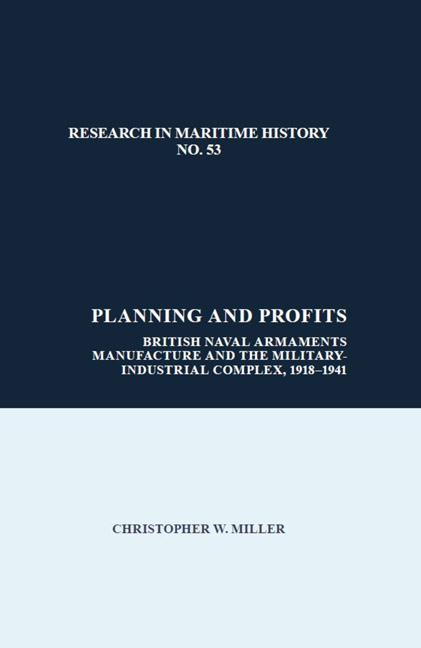 Planning and Profits
Planning and Profits from Part Four - The Ultimate Potential Enemy and Rearmament Planning, 1934–1936
By the end of 1935, Britain's international security looked far less certain than it did in the spring of 1931 because now there were three credible adversaries: Japan, Germany and Italy. As a direct result of these developments, the tentative work of the CID to explore, if not tackle, industrial and material deficiencies that began after Manchuria took on even greater meaning and urgency. By the time that Mussolini's forces had invaded Abyssinia (modern-day Ethiopia) in October 1935, a two-front war in Europe and Asia requiring a renewed navy and an expanded air force was considered by the CID to be a very real possibility. Moreover, the idea of a major rearmament effort entered, finally, into in public consciousness.
Political Background
Of course, the first indications of a two-front threat during this time came not from Italy but from Nazi Germany, which had emerged as a force under Hitler in early 1933 and withdrew from the Geneva disarmament conference that October. The deterioration of relations with Germany prompted the CID to formally plan based on a twin German-Japanese threat by the beginning of 1934. Cabinet responded to the CID's concerns with the largely Hankey-led initiative known as the Defence Requirements Committee – another CID subcommittee. The decision by Cabinet to grant the DRC approval to examine the “worst problems in British defence” has been characterised by some historians as the “first major step” in war planning since 1918 and the “beginning of rearmament.” As to the first of these contentions, it was nothing of the sort. While it may have been an incremental change in top-level foreign policy insofar as it was a clear recognition by Cabinet of the need to improve the condition of British defences, as far as planning is concerned it was only a continuation of the work of the supply subcommittees. Deficiency hypotheses had been circulated since 1931, so while the recognition of the German threat at the end of 1933 – and the formation of a committee with an explicit remit to discuss deficiencies – has perhaps understandably been taken as a point of departure for the study of rearmament policy, in terms of industrial deficiencies and planning the work was already well under way, as evinced by the long process which led to the establishment of the Advisory Panel.
To save this book to your Kindle, first ensure [email protected] is added to your Approved Personal Document E-mail List under your Personal Document Settings on the Manage Your Content and Devices page of your Amazon account. Then enter the ‘name’ part of your Kindle email address below. Find out more about saving to your Kindle.
Note you can select to save to either the @free.kindle.com or @kindle.com variations. ‘@free.kindle.com’ emails are free but can only be saved to your device when it is connected to wi-fi. ‘@kindle.com’ emails can be delivered even when you are not connected to wi-fi, but note that service fees apply.
Find out more about the Kindle Personal Document Service.
To save content items to your account, please confirm that you agree to abide by our usage policies. If this is the first time you use this feature, you will be asked to authorise Cambridge Core to connect with your account. Find out more about saving content to Dropbox.
To save content items to your account, please confirm that you agree to abide by our usage policies. If this is the first time you use this feature, you will be asked to authorise Cambridge Core to connect with your account. Find out more about saving content to Google Drive.